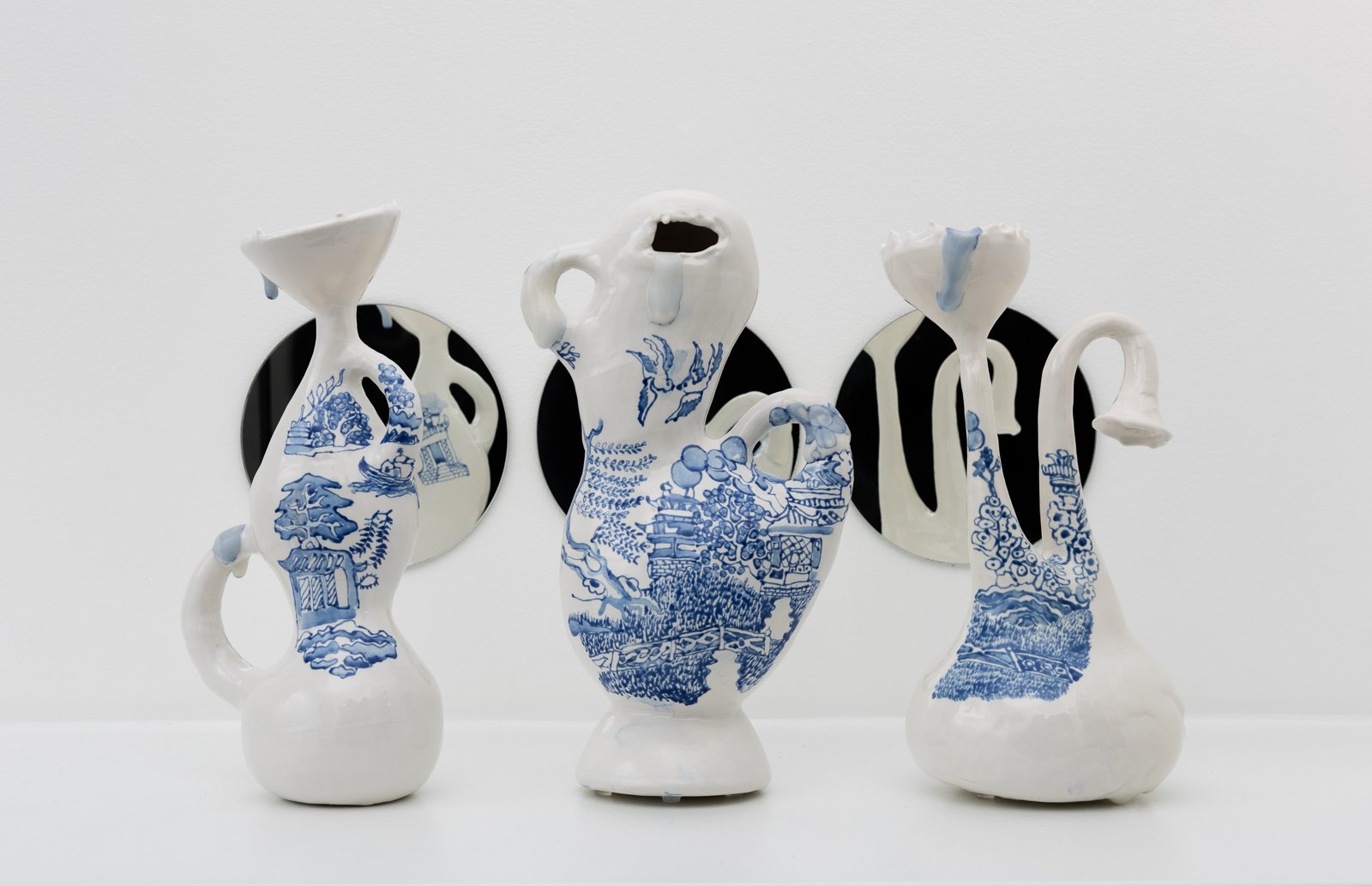Kunstnergruppen AvArt - Arild Berg, Elise Kielland, Linda Lothe, Mimi Swang
Out of the blue
5 May - 26 June 2022
"Out of the blue" is a site-specific exhibition of the project "Blue Collar - White Collar". The artist group AvArt, who formely the shared Studio AvArt, thematize crafts in the age of technology. Efficiency, productivity, and digitalization are well-known terms for value creation in our time. Technological development has changed human labor. Craftmanship, the work of the hand, is changing and challenged. What value does good craftmanship have if a machine can do it better and faster? A conceptual framework for the project has been to work with blue and white colors, as this has deep roots in the history of ceramics. The exhibition draws a line from today's discussion to the first industrial revolution, where the Arts & Crafts movement became a counterforce to industrialization. Site-specific versions of the project have been shown at Nääs Konsthantverk, Gothenburg (2017), Buskerud Kunstsenter, Drammen (2018), the national exhibition ‘Crafts 2018’, Fredrikstad, and at the Korean International Ceramics Biennale (2019).
Arild Berg (1966) is Professor of Artistic Research at the Faculty of Technology, Art and Design at OsloMet – Oslo Metropolitan University. His research is about interdisciplinary art and design. He is the Norwegian coordinator for the Creative Europe project Craft Hub. He has been a project manager to establish the interdisciplinary doctoral program Engineering Science. In the exhibition Out of the Blue, he shows stripes in three wall sculptures casted in porcelain. This artistic research is based on an article he wrote with Karen Disen, KhiO; Stripes - in light of Schiller's concepts of human foundations in form (2018), FormAkademisk. The works are Signs, A New Language and Contradictions (2022).
Elise Kielland (b. 1964) lives and works in Oslo. She studied at the National College of Art and Design, Oslo (1991-96). She has had several solo exhibitions and participated in collective and group exhibitions in Norway and abroad. Her work have been purchased by KODE in Bergen. Kielland works in a time-consuming manual process where she builds layer upon layer, burning her surfaces many times. The ceramic works have a personal touch that incorporates elements from painting, while at the same time drawing parallels to ceramic traditions. The motifs are for the most part stylized elements from nature put together in a rhythmic, ornamental expression. Her work unfolds manually over time, subject to something uncontrollable. Time is needed to make the most of the unexpected.
Linda Jansson Lothe (b 1963, Gothenburg) has her education from Konstfackskolan, ceramics and glass, Stockholm, and a master's degree in ceramics from avd.SHKS, Kunsthøgskolen, Oslo. Her studio is in Heggedal factories, Asker. Lothe is interested in the narrative; the story that is encapsulated in things. Legends, myths and fairy tales often serve as inspiration. For several years she has explored the iconic Willow motif, which originated in Stoke on Trent in England in 1780. The pattern, originally used on tableware, is fragmentized and put together in new constellations. To be open to what might occur during the process is paramount. Lothe participates in exhibitions in Norway and abroad and her work is included in National and international collections. She has made several public art comissions in Norway and Sweden.
Mimi Swang (b.1969 in Oslo) She has been a part of the AvArt Studio in Oslo for the past 20 years, but is currently situated in Heggedal Fabrikker in Asker. She is educated at Statens Håndverks- og Kunstindustriskole 1990-94. She is working in different materials, such as silver and aluminum in her jewellery projects, in addition to clay and textile. She has been exibiting both in Norway and abroad. Mimi Swang combines porcelain/stoneware with different textiles, such as blue jeans and white shirts, used as symbols of the industrial- and the tecnological eras. What is the value of manual craftmanship in the age of efficiency? Mimi Swang explores the possibilities of the materials in combination with traditional textile techniques. In her works she plays with the idea of the brain's ability to independently and spontaneously determine or change an overall plan during the process of creating, in contrast to automation of labor.











